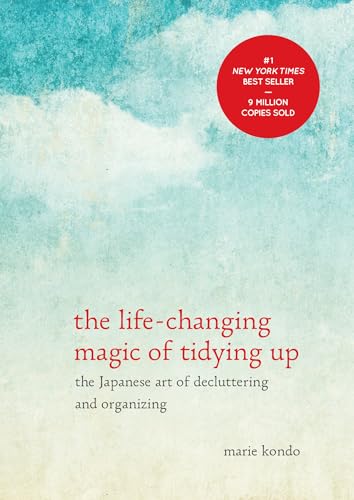 |
She has you ask yourself, "Does this thing bring me joy?" I realize that while things used to bring me joy, they no longer do. So it is OK to "let go" of that thing and know that its time of giving you joy has past, and you have that memory of it giving you joy. So, there were some good principles (although I won't be talking to my objects anytime soon - some of her stuff is just weird Shinto stuff that I have no desire to approach).
Here is a link to a thorough analysis of the book along with pictures of how the author put it all into practice. That was helpful:
http://www.jdroth.com/konmari-method-life-changing-magic-tidying/
Here is a book excerpt:
https://www.scribd.com/doc/232194390/The-Life-Changing-Magic-of-Tidying-Up-by-Marie-Kondo-Excerpt
Here is the order (Sorry if the numbering is all wonky, Blogger has such an outdated word processor that sometimes it does the weirdest things. So I put it in Word, and it looked fine so now I am cutting it from Word and putting it back here and hoping it works.):
1. Clothes
Here is a book excerpt:
https://www.scribd.com/doc/232194390/The-Life-Changing-Magic-of-Tidying-Up-by-Marie-Kondo-Excerpt
Here is the order (Sorry if the numbering is all wonky, Blogger has such an outdated word processor that sometimes it does the weirdest things. So I put it in Word, and it looked fine so now I am cutting it from Word and putting it back here and hoping it works.):
1. Clothes
1.
Tops
2.
Bottoms
3.
Hung Clothes [Hang from
left to right: coats, dresses, jackets, pants, skirts, blouses],
4.
Socks
5.
Underwear
6.
Bags
7.
Accessories
8.
Clothes for special
events [swimsuits, uniforms, costumes, triathlon, backpacking], shoes)
2. Books
3. Papers (discard everything that does not fall into these
categories: currently in use, needed for a limited time, kept indefinitely.
This includes credit card statements, old checkbook stubs, greeting cards
(unless sentimental for joy), seminar notes [oh that would be hard for me as I
feel like an archival person when it comes to that]. This does not include
papers with sentimental value as they go in the mementos category)
4. Komono (miscellany)
1.
CDs, DVDs
2.
Skin care products
3.
Make up
4.
Accessories
5.
Valuables (passports,
credit cards, etc)
6.
Electrical equipment
(camera, electric cords, anything vaguely so)
7.
Household equipment
(stationary and writing materials, sewing kits, etc.)
8.
Household supplied
(medicine, detergent, tissues, etc.)
9.
Kitchen goods/food
supplies (spatulas, pots, blenders, etc.)
10.Other (spare change, figurines, etc.)
5. Mementos
She says to do this over a six month period of time. I think that is
reasonable. She recommends by category rather than room (I wonder what the
Flylady thinks of that?). She also recommends having all your things in
that category in one place (unless they are for specific season clothes).
It is not as worthless a book as some have reviewed, but it is
also not as earth shattering as others have purported (I mean really
- the way she teaches you to fold your shirts is the way my mom taught me
years ago, but I realized I have NOT taught my kids this method, and I will do
so today!)

No comments:
Post a Comment